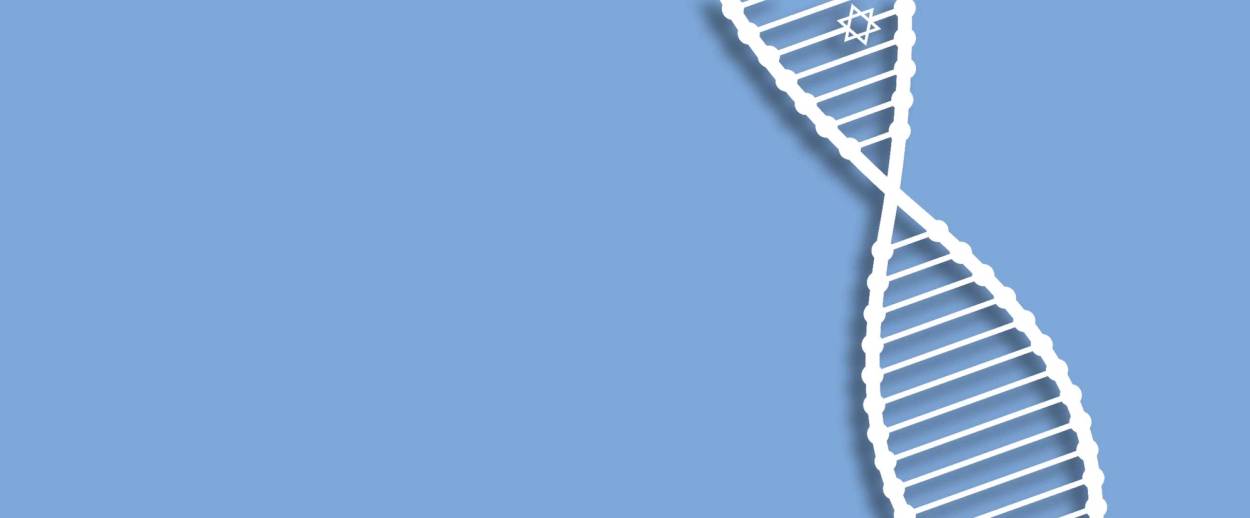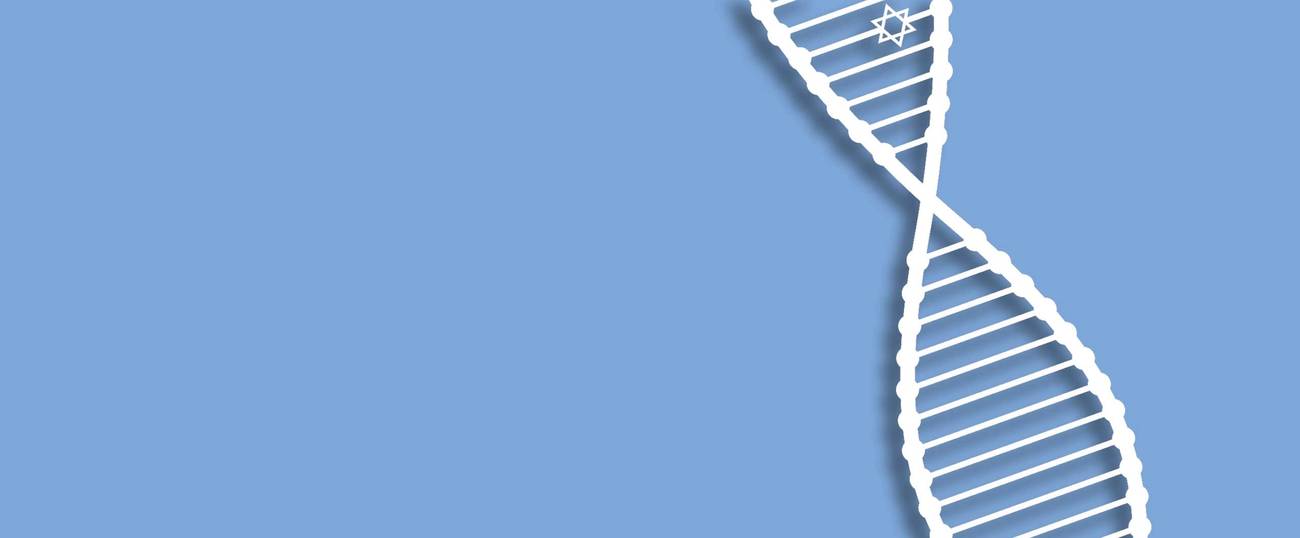The Converso Comeback
Hispanic crypto-Jews use social media and DNA testing to reconnect with their heritage




When retired civil servant Carl Montoya arrives for prayers at Mikveh Israel Synagogue in Philadelphia, he has a routine. He expertly wraps tefillin, dons his Sephardic prayer shawl, and greets his many friends in the pews. The Hebrew prayers can be tricky for him, but he is slowly mastering them all, together with the rest of Jewish ritual life. As a convert to Conservative Judaism and an active member of an Orthodox synagogue, Montoya has definitely broken from his past as a Catholic with deep roots in New Mexico’s historic Hispanic community. But what makes his story truly remarkable is not just that he is a Jew by choice, but that he is a Jew by birth.
Like many of the around 100 million other descendants of crypto-Jews of Spanish-Portuguese heritage globally, Montoya became curious about family lore. He learned his ancestors were Bnei Anusim—a Hebrew term for conversos, those forced to convert to Christianity during the Spanish Inquisition—who fled from the Iberian Peninsula to what is now New Mexico. Montoya shares his heritage with many others in the American Southwest, Central and South America, Spain, and Portugal. In Spain alone, one in 20 Iberian men have DNA markers identifying them as having a Jewish background, while some 15 percent of Hispanic men in the Southwest have those markers.
Almost 200 years after the last victim of the Inquisition was murdered in 1826, the true picture of what happened during that deadly period of Jewish history is only now emerging, thanks to the growing popularity of social media and online DNA testing services. Curious individuals can now pay a small fee to learn crucial genetic information, then head to Facebook forums such as Tracing the Tribe, where they can meet others searching for clues to the past.
Once they have determined their links to 15th-century Spanish Jewry, the next step is different for every individual. Some convert to one of the traditional branches of Judaism, while others identify as Jewish without feeling the need to be ratified by a rabbinic court. Still others remain members of another faith or no faith while finding new inspiration to study Judaism, or visit Israel.
Decades after her conversion to Orthodox Judaism, Genie Milgrom, a Cuban-born author, successfully traced an unbroken maternal lineage 15 generations back, to the Jewish community in Spain in the 1500s. She says that technological advances are only one part of the push to examine the past. The last 20 years have also brought with them a cultural shift that has allowed people to explore their authentic selves, she says. “We’re a lot freer to talk about our own deep feelings,” said Milgrom in a telephone interview. But as with the Holocaust, the tragic nature of the Spanish Inquisition, which began in 1478 and included the torture and public murder of Jews and other “non-believers,” made grappling with the pain almost impossible. Some experts feel its full magnitude has been repressed by the global Jewish community.
Ashley Perry, former adviser to Israel’s minister of foreign affairs, heads Reconectar, a group that assists Bnei Anusim who wish to reconnect to Judaism. Perry says that many spiritual leaders of the Jewish community today are largely unaware of the “Gestapo-like existence” that led conversos to profess Christianity while risking their lives to maintain a secret Jewish life.
Centuries later, in the remote hills of New Mexico, their cultural isolation continues. According to Schelly Talalay Dardashti, an expert on Jewish genealogy and the U.S. genealogy adviser for MyHeritage.com, “The old converso families don’t talk about it. As we say in New Mexico, the motto is: ‘Deny until you die.’” Even today, those who return make the journey alone, and many encounter disapproving family members. Montoya, who enjoys a good relationship with his family, acknowledges that elder family members have been reluctant to share: “You have to keep in mind the social patterns in the Southwest, and the discrimination even today. ‘I think they’re thinking, ‘Hey, we already have to deal with the Hispanic thing; why do we want to add this Jewish thing?’”
“We don’t schlep our families with us,” said Milgrom. “You walk away from the Catholicism in your family, and you come to this place alone.” Most of the current Bnei Anusim are indeed on their own, motivated by a few strange family traditions coupled with a sense of feeling Jewish, says Milgrom. Montoya was middle-aged before he began asking elder family members about their memories. Those returned slowly, as if being dredged from the past. When he asked his mother about the practice of covering mirrors when mourning a death, she said the family had not observed that Jewish custom. “Then I asked my aunt, and she says: ‘Oh yeah, when your grandmother died, we covered the mirrors.’”
Montoya later learned that his parents observed the practice of lighting candles each year at the anniversary of the death of their parents and that when sweeping the floor, they gathered the dirt in the center of the room, never near the door—a practice prevalent among Bnei Anusim. “The idea is that you didn’t want to disrespect the mezuzah on the doorpost, even though there was no mezuzah,” he explained. Perry has encountered countless variations of these customs: “I met a woman whose mother and grandmother would always slap her hand when she pointed at the night sky,” he said. Jews traditionally mark the end of Shabbat by the appearance of three stars. Being seen to observe Shabbat would have been a crime punishable by death, he explained.
For Montoya and Milgrom, rediscovery of Jewish family lore either led to, or followed, intense Jewish study and conversion, but the path for Mendel Leandro, a student at Vassar College who was born in Medellin, Colombia, has been different. At birth, Leandro was given both a Spanish name and, unusually, a Yiddish one. When his parents were expecting him, his father overheard a Jewish family calling their son Mendel and decided to call his own son that name, as he felt a connection to the Jewish people. Given that unique name, it was not such a surprise when at 14, Leandro was told that his father’s side of the family had Jewish heritage.
He took a DNA test and found a remote Jewish ancestor, and his paternal grandmother’s test revealed more Jewish relatives. That fit community lore, because many individuals from his grandmother’s village in Colombia had returned to Judaism. Leandro’s grandmother is reluctant to answer questions about her roots, though she did recall that her father would always wear a hat, a custom frequently associated with being Jewish.
While he has not pursued formal return, Leandro’s discovery has led him to become active in Jewish life at Vassar. He says the experience has changed his views on Israel, leading him to support the Jewish state alongside a just peace that honors Palestinians and their history. “By halachic law, I am not a Jew, because I get my ancestry from my father’s side,” he said. “But I believe it is part of my duty to honor the memory of my ancestors in some way.”
At Vassar, others sometimes question his Jewish bona fides. “Although it’s a predominantly white, Ashkenazi space, and therefore I am not the best fit as a Sephardi-identifying Latino, I still enjoy each Shabbat and am so grateful for the pluralistic values, which foster a welcoming environment to Jews of all persuasions,” Leandro said.
Leandro is part of a new wave of young people pushing for exploration of the past. “The younger generation first adopted the technology,” said Dardashti. Taking a DNA test is often one of the first steps taken, and it can “open a door” to further research, she added. But a door to what? “If you take someone’s epithelial cheek cells and put them under a microscope, you’re not going to see little Jewish stars,” she cautioned. Still, she says, if you have a statistically significant number of matches to people of Jewish origin, you can make the assumption of Jewish ancestry.
The most popular choice for DNA testing is an autosomal test, which goes back about eight generations and is administered by companies such as MyHeritage, 23andMe, and Ancestry. These tests offer a percentage estimate for ethnicity, although the categories vary from company to company. DNA becomes less defined with the passage of generations, so it is difficult to detect Jewish heritage from a distant grandparent who contributes just a small proportion of DNA. Plus, DNA can skip generations, according to Milgrom, and some of these tests can be confusing, convincing people with significant Jewish heritage that they have none, and vice versa.
Beyond autosomal testing, Family Tree DNA, the most popular DNA service for those seeking Jewish roots, offers Y-DNA testing, in which a male can test for his haplogroup, and mtDNA testing, passed along the matrilineal line to both men and women. If family lore or DNA tells a convincing story, the next step is checking records from the period before, during, and after the Inquisition. Existing notarial and church records often include the names of individuals both before and after their official conversions to Christianity. However, Milgrom explains, records often age poorly and “are like wet tissue paper,” and employing a researcher with the necessary skills to decode them is expensive.
Advocates of the Bnei Anusim are tackling these problems from several vantage points. Milgrom’s forthcoming project, funded by an anonymous donor, will offer free digitized Inquisition records, to become available later this year, while Dardashti is working to making other records equally accessible.
Reconnectar, in Israel, is working with the Israeli government and rabbinate to help individuals return to Judaism, and on creating support networks for those in the exploration phase. A matching service, reminiscent of an online dating site, will help connect Bnei Anusim to Jewish friends who practice in ways that interest them, with an emphasis on involving those from similar Sephardic backgrounds.
However, Orthodox and many Conservative bodies require the equivalent of a conversion process, even though many individuals already feel they are Jewish—and some of them might even qualify as such from a halachic perspective. Albert Gabbai, an Orthodox rabbi who leads the historic Mikveh Israel Synagogue in Philadelphia, has assisted people of crypto-Jewish heritage. “Sometimes, we don’t call it a conversion,” Gabbai said. “We call it a returning.”
Although some find the process too rigorous or arbitrary, Gabbai defends it as an effort to preserve the authenticity of Jewish practice. “Once sincerity has been established, such a person comes under the wings of the Divine Presence,” said Gabbai. If so, there are several million waiting for those proverbial wings. Perry, of Reconectar, said that working with such people is “the challenge of the Jewish people in the 21st century,” because, he said, “there is nothing else that even comes close to the potential of tens of millions of people who want to reconnect to the Jewish people.”
***
Like this article? Sign up for our Daily Digest to get Tablet Magazine’s new content in your inbox each morning.
Suzanne Selengut writes feature stories about global Jewish issues and the arts. She is based in New York City.